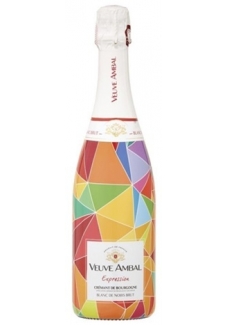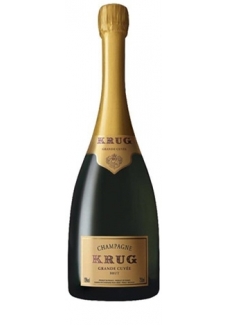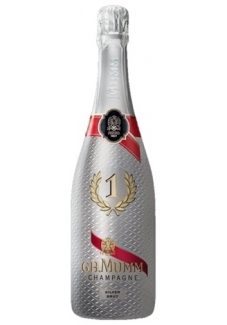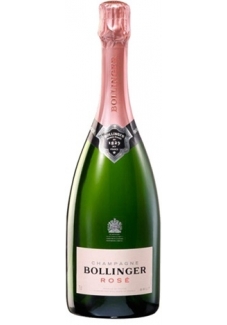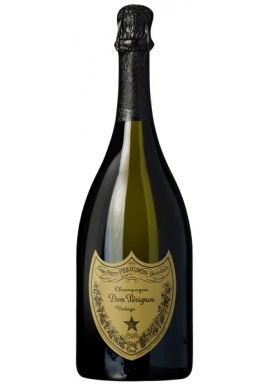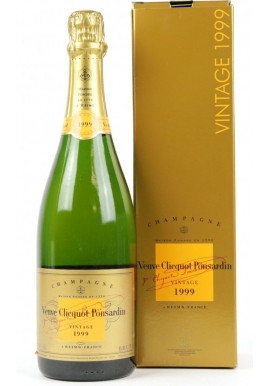FRENCH CHAMPAGNES
The evolution of the present day method of making clear sparkling wine using the second fermentation took over 200 years. Champagne is a wine that appeals to the broadest senses, rather than to the particular. It is the overall impression it leaves in the mouth after it is swallowed which matters most .It is true that the greatest Champagnes are...
The evolution of the present day method of making clear sparkling wine using the second fermentation took over 200 years. Champagne is a wine that appeals to the broadest senses, rather than to the particular. It is the overall impression it leaves in the mouth after it is swallowed which matters most .It is true that the greatest Champagnes are wines of extraordinary finesse, balance, and above all else length of flavours, the intrinsic quality of these wines is on a par with the greatest of the still white or red table wines. Just as the Burgundians place special emphasis on the bouquet, the Bordelais on the palate and structure, so the Champenois claim the finish and, in particular, the aftertaste as a special feature of their wine. Not that all Champagnes taste the same, there is a world of difference between a Pol Roger and a Krug,a Taittinger and Bollinger, let a alone between a vintage Champagne of one of the grandes marques and a non vintage, "buyer's own brand" from one of the cooperatives. Yet the overall consistency of the quality and style and non - vintage Champagne from the grandes marques exceeds that of any other category of wine in any region - an astonishing achievement, given the marginal climate in which the Champenois grow their their grapes, and the fluctuations in supply and demand which they so skilfully manage from making viewpoints. Assemblage known as blending is the most critical stage of the long and delicate process which makes the finished Champagne. It is the art that made Dom Perignon the most famous oenologist of his day, indeed, perhaps the famous winemaker in history. Blending involves a detailed knowledge of the past, present, and future of the materials, and requires highly specialized tasting skills which can see beyond the often hard, acidic, thin, and chalky base wines that give only a barest glimpse of how they will taste once they have been blended, undergone the second fermentation, benefited from contact with yeasts during years of maturation on the lees, and been adjusted for sweetness using liqueur d'expedition. The task demands the mental skill of a chess grand master as literally endless permutations and combinations are considered. The blenders at Moet & Chandon typically have 300 different base wines from any one vintage to deal with the possible permutations are beyond calculation. one of the most fascinating, and important aspects of Champagne is the use of "reserve" wine held from earlier vintages. It may be held in magnums under slight gaseous pressure, in stainless steel, or less commonly in oak. Champagne house's such as Krug have reserve wine of up to twenty years old, although in diminishing quantity with age. They will usually be held over from vintage years,and,tasted on their own, can be superb. reserve wines can be used at three stages in the making of Champagne. They can be incorporated in the primary ferment, then most commonly and importantly at the time of blending or assemblage along with the liqueur de tirage, and least importantly because of the tiny volume with the liqueur d'expedition . All the Champagne houses privately acknowledge that the quality and style of their reserve wines have a powerful influence on their overall house style, but tend to downplay this importance publicly. Vintage champagne is strictly directed under European Union legislation, eighty five percent of the wine must be from the stated vintage year, which would allow generous incorporation of reserve wine. Under the appellation controlee of Champagne, the wine must be one hundred percent from its stated vintage. So reserve wines are customarily used in the blending of vintage Champagne - and to its great benefit-just as much as with non-vintage wines. The Champenois and the Comite Interprofessionel du Vin de Champagne are ever alert to emphasize their unique combination of terrior and climate. Champagne is France's northern most vineyard region. Without the special properties of its chalk soil, free - draining and sun reflecting, it would be a very doubtful area for ripening grapes. At Chancellors Cellars we have assembled an extensive range of famous Champagnes and Sparkling Wines for you to select.
FRENCH CHAMPAGNES There are 2 products.
Subcategories
-
Blanc de Blancs
Blanc de Blancs Champagne is derived from the Chardonnay grape only. These are, on release, the lightest and most graceful wines of the lot, but properly aged vintage example take on a gorgeous toasty richness that quite belies the lightness argument. Some favourite styles, if you're buying are Salon,Ruinart,Nicolas Feuillatte,Billecart-Salmon, Drappier,Taittinger Comtes de Champagne, Krug Clos de Mesnil.
-
Blanc de Noirs
Blanc de Noirs White champagne made from the black grapes, Pinot Noir and Pinot Meunier,usually with a noticeably darker tone to it, although it's never pink. They can be rather heavy and lumpish, certainly not a beginner's champagne, but when good, their richer style can be impressive. The Pinot Noir brings weight and richness to a blend and helps it to age productively, while the Pinot Pinot Meunier is less distinguished grape in itself, but does lend a distinct fruity immediacy to many blends. Some houses play down the influence of this grape; others including Krug openly celebrate the function it serves. The Blanc de Noir style are good champagne's to accompany with food. Some of the best Blanc de Noirs Champagne to consider are the Bollinger Vieilles Vignes, de Venoge, Billiot, Serge Mathieu, Alexandre Bonnet.
-
Brut
Most champagne is labelled Brut, which is the standard bone-dry style. The style of a champagne is determined at the last moment,before the cork goes in,when a quantity of sugar in solution known as the dosage is added to create the final taste. Even brut contains some sugar, since unadorned champagne is a naturally very acidic wine. Avery few wines receive no dosage at all, and may be labelled Brut Zero. Alternatively, an above average amount of sugar can be added to create a sweeter style either medium dry, labelled Demi-Sec or positively sweet, and labelled either Doux or, sometimes, Rich. Louis Roederer produces a nicely balanced "Rich"
-
Cuvee
Cuvée French Champagne is mostly produced by top - drawer spacial bottling. These are usually, but not always - a vintage wine, produced just to show how good they can really get. They are aged for longer than ordinary vintage wine, or come from particularly favoured parcels of vineyard land.The packaging is often quite diverting, as witness Belle Epoque in its flower painted bottle, or the multi faceted crystal effect of Nicolas Feuillatte's Palmes d'Or. Even more than straight vintage wines, these champagnes have to be aged properly.Some of the best Cuvee to consider are Roederer Cristal, Pol Roger Cuvée , Sir Winston Churchill, Domerignon, Krug Grande Cuvée, Veuve Clicquot,La Grande Dame, Bollinger RD, Perrier - Jouet Belle Epoque, Grosset Grande Reserve, Mumm Rene Lalou, Pommery Cuvée Louise, Laurent - Perrier Grand Siecle, Nicolas Feuillatte Palmes d'Or.
-
Cuvee Brut
Brut Cuvée Champagne, our driest and most traditional champagne offering, is vibrant on the palate until the last sip. Green apple, jasmine, hints of kiwi and peach flavors bubble up for a crisp, lingering finish. bubbling with aromas of Chardonnay, it's an instant favorite for any champagne occasion.
-
NV ~ Non Vintage
Non Vintage NV ~ The benchmark style, and the wine that the reputations of the houses live or die by,is the non vintage blend. Each year, a quantity of base wine is held back in reserve, and small amounts of this older, maturer wine are used to give a softer feel and more complex flavour to what would be otherwise be very raw,acidic wine. When there has been a run of good vintages, the quality of th NV goes up significantly. Styles vary enormously from one producer to the next . What unites the best are good balance, roundness of texture and depth of flavour leading to a long finish. The best houses to consider are Charles Heidsieck,Pol Roger, Bollinger, Veuve Clicquot,Billecart - Salmon, Taittinger, and Louis Roederer to name a few.
-
Rose Reserve
French Rose Champagne is made by adding a little still red wine from the locale to the white champagne (a practice not permitted anywhere else in France). A small amount, perhaps two percent, is made by staining the white juice by allowing the red grape skins to soak in it for a short while. At best, rose champagne have an exhilarating strawberry or raspberry fruit that makes them glorious for summer drinking.Colours vary hugely,from Hollywood - starlet lipstick to a faint brownish tinge ("onion skin is the technical term) for those given the briefest maceration. Some of the best French Rose Champagne to consider are: Pol Roger, Veuve Clicquot, Ruinart,Bollinger, Gosset, Billecart - Salmon, Jacquart and at the very expensive end Perrier - Jouet Belle Epoque, Roederer Cristal and Veuve Clicquot La Grande Dame.
-
Vintage
Vintage French Champagne is the produce of a single year's harvest, with the year stated on the label, aged for a minimum of three years on its lees (although the better houses will give it longer). Like port, vintage wine should be theoretically only be made in the best years, maybe three or four times a decade, but it seemingly takes a spectacularly rotten vintage to dissuade everybody from producing a vintage wine.
On average, vintage wines are released at around five years old (but barely more than three is not unknown, sadly). They don't really come into their own until after eight to ten years. Bear this in mind when you buy it, these wines are too expensive to waste by drinking them immature. The reward is deep, richly complex, honeyed wines, often having the aroma of freshly baked bread or brioche, the best suitable for drinking with food.
Some of the best French Vintage Champagne producers to consider are: Taittinger, Bollinger, Moet & Chandon, Lanson, Veuve Clicquot, H Blin, De Venoge and Henriot.
-
$699.95
Dom Perignon Champagne 1998 Vintage Reims... Dom Perignon Champagne 1998...
Dom Pérignon is among the most iconic Champagnes in the world. The 1998 vintage gives white peach, candied lemons, vanilla, praline and white pepper on the nose followed by a complex, concentrated palate with superb texture and structure resulting in a striking and enduring richness. Dom Perignon Champagne blend is made up of: Chardonnay Pinot Noir Pinot... Dom Pérignon is among the most iconic...
-
$249.95
Veuve Clicquot Ponsardin Champagne 1999... Veuve Clicquot Ponsardin...
Veuve Clicquot Ponsardin Champagne 1999 Vintage, in its attractive bright golden colour prepares us for the explosion of aromas that subsequently perceive. Combiena nose perfectly strength and elegance. aromas of fresh fruit (apricot, pear and peach) between toasted notes (brooch, honey and almonds) feel, all wrapped in an aura of sweet spices and candied... Veuve Clicquot Ponsardin Champagne...
ABN: 11 806 263 393
Liquor Licenses
337 526 06
360 674 16


